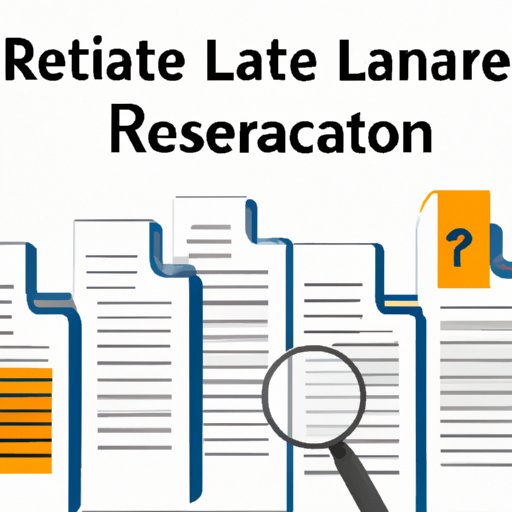Introduction
A literature review is an essential part of any research project. It provides an overview of existing research on a topic and helps to identify gaps in knowledge that can be addressed by further research. Conducting a literature review requires an understanding of the research process, the ability to critically evaluate existing literature, and the capacity to organize and synthesize information. This guide outlines the steps for conducting a literature review.

Definition of a Literature Review
A literature review is a systematic survey of published research on a particular topic. It is a type of secondary research that involves reading, evaluating, and summarizing existing research. The purpose of a literature review is to gain an understanding of the existing research and to identify gaps in knowledge that can be addressed by additional research.

Purpose of a Literature Review
The purpose of a literature review is to provide a comprehensive overview of existing research on a specific topic. A literature review allows researchers to identify gaps in existing knowledge and determine which topics require further exploration. A literature review also serves as a foundation for future research by providing an understanding of existing research and related theories.
Identify the Main Research Question and Relevant Sources of Literature
The first step in conducting a literature review is to identify the main research question. This will serve as the foundation for the literature review and will help to focus the search for relevant sources. Once the research question has been identified, the next step is to search for relevant sources of literature.

Clarify the Focus of the Research Question
Before beginning the search for relevant sources, it is important to clarify the focus of the research question. The research question should be clear and concise so that it can be easily understood. Additionally, it is important to consider different aspects of the research question, such as the scope, timeframe, geographic area, and population.
Search for Relevant Sources
Once the research question has been clarified, the next step is to search for relevant sources of literature. This can be done through online databases, journals, and online libraries. Additionally, it is important to consider different types of sources, such as books, journal articles, reports, and dissertations.
Develop a Search Strategy to Find Pertinent Literature
When searching for relevant sources of literature, it is important to develop a search strategy. This includes considering different search strategies, utilizing keywords and subject headings, and using databases, journals, and online libraries. For example, when searching for relevant sources in an online database, it is important to use keywords and subject headings that are related to the research question.
Read, Analyze and Evaluate Literature
After finding relevant sources of literature, the next step is to read, analyze, and evaluate the content. This involves critically assessing the quality of the information and comparing and contrasting different perspectives. Additionally, it is important to consider the validity and reliability of the sources and the accuracy of the data presented.
Group and Organize Findings According to Themes or Topics
Once the literature has been read and evaluated, the next step is to group and organize the findings according to themes or topics. This involves determining common themes or topics and categorizing the literature accordingly. This will help to identify patterns and relationships between different sources of literature and make it easier to synthesize the information.

Summarize and Synthesize the Literature in a Meaningful Way
The next step is to summarize and synthesize the literature in a meaningful way. This involves creating an outline of the literature and writing a summary of the findings. Additionally, it is important to consider the implications of the literature and generate new questions for future research.
Discuss Gaps, Implications, and Potential Research Questions
The final step in conducting a literature review is to discuss gaps, implications, and potential research questions. This involves identifying gaps in the literature and discussing the implications of the findings. Additionally, it is important to generate new questions for future research based on the gaps in the literature.
Conclusion
Conducting a literature review is an essential part of any research project. It provides an overview of existing research on a topic and helps to identify gaps in knowledge that can be addressed by further research. This guide outlined the steps for conducting a literature review, from identifying the main research question to summarizing the findings in a meaningful way. By understanding the research process and developing a search strategy, researchers can effectively conduct a literature review and synthesize the information in a meaningful way.
(Note: Is this article not meeting your expectations? Do you have knowledge or insights to share? Unlock new opportunities and expand your reach by joining our authors team. Click Registration to join us and share your expertise with our readers.)
